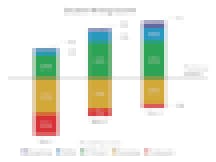Using OER is hard. Finding good lessons, videos, articles and activities is hard. Putting these pieces together to create a coherent school year is hard. Making sure the approach to reading and writing across materials created by a bunch of different people is hard.
Finding time to do that work is even harder.
Two years ago, I was having lunch with good friends and colleagues Bob Regan from the Big History Project and Alan Louie, my co-founder at TextGenome. Over sandwiches and iced tea, we talked about the challenges of OER. The Big History Project (BHP)’s approach relies on building a complete curriculum but inviting customization—“a perpetual first draft.” BHP, dubbed a “social studies course that runs on jet fuel”, covers nearly 14 billion years of history for middle and high school students. Along the way, there is a heavy focus on writing. Students are introduced to a key set of practices early and they are reinforced often. BHP’s research has shown dramatic gains in student writing proficiency. The question we pondered was how to preserve these gains as teachers modified BHP courses, and specific lessons evolved over time.
While we were curious to learn more details about the approaches to writing in BHP, Bob was even more curious to find out what he could do to further improve students’ writing. That’s because writing well, which is essentially thinking on paper, is a strong predictor of future success in school and beyond. This led to a conversation about TextGenome and our work developing technology to improve reading comprehension with Drs. Elfrieda “Freddy” H. Hiebert and Kirill Kireyev. Freddy has been studying how kids learn to read for four decades and has written more than 100 peer reviewed articles on the subject. Kirill is a cognitive and computer scientist who turns Freddy’s expertise into algorithms that can be used to analyze texts and call out key vocabulary in those texts. Right away, we saw an opportunity to look across the diverse set of readings and videos (using closed caption data) to create coherent vocabulary for BHP, including student activities, to help the learners get the most out of the content. By the time the lunch bill was paid, a plan was hatched.
As Freddy is wont to say, “No one gets good at anything without practicing the skill or strategy.” Deliberate practice and support are two key elements of BHP’s approach to writing.
The Big History Project’s approach to the teaching of reading comprises four components.
- Three Close Reads—BHP suggests that all readings be examined three times. First, to “capture the gist”; second, to find key ideas, vocabulary, and facts in the reading; and, third, to think bigger about the subject.
- Leveled readings—Each of the articles in the course is provided at multiple reading levels to ensure that all students can access and understand the material, enabling them to participate in the class.
- Video as text—BHP believes that understanding video is another literacy skill for students to develop. They suggest an approach to video similar to that of Three Close Reads, in which students first watch the videos, then read the transcripts along with the videos, and finally actively reading the transcript as they would other texts.
- Vocabulary activities—These are intended help the student come to know the key vocabulary in the texts. This is where TextGenome.org comes in.
Every reading in BHP is accompanied by a short list of the words that are determined to be the most important for the readers to master. Words are chosen as “important” because they challenge students, are part of a morphological family whose members the students will get to know, and are useful across a range of topics and content areas. The words are displayed with their families, their semantic networks, and as part of authentic sentences. The students are challenged to fit the words and their families into sentences and match them with synonyms, among other activities. The goal is to not give readers a list of words and definitions to memorize, but rather to get them familiar with words and their place in language and knowledge.

Full size image here.

The level of attention to vocabulary possible with TextGenome was really only possible with the assistance of a set of algorithms. Working across so many disparate texts, it would be nearly impossible for a teacher to create anything like this when using OER. Tools like TextGenome create new opportunities for OER to resemble more traditional textbooks without placing more demands on the teacher.
Big History’s approach to the teaching of writing is as systematic as its approach to the teaching of reading. BHP’s writing rubric is aligned with the Common Core and the writing approach is aligned to the College, Career, and Civic Life (C3) Framework for Social Studies State Standards dimensions of inquiry.

Yet, the goal across BHP’s activities and assessment is consistency. The better students understand the rubric, the better they will understand their own writing. To the extent this can be made transparent to teachers and students, the easier it can be for them to replace individual activities with ones of their choosing, or to replace the rubric altogether.
Highlighting the importance of clear and consistent skills, BHP has been working with the University of Michigan to conduct a writing assessment for the past five years. The study looked at US students ranging from 7th to 12th grade taking the Big History Project course. The 2016-17 assessment results show strong growth over the year among high school students. These gains were reflected across independent, public and Title I public schools.

The secret to great writing results from students isn’t exactly a secret. Students need clear expectations, consistent, quality feedback and opportunities to practice their writing. This isn’t something BHP invented. Teachers have known this secret for a long time.
The challenge of using OER in the classroom is not just finding good content, but instilling good practices. Finding materials that work together, that share a common set of expectations and that introduce, reinforce and formalize these ideas consistently is hard. Content is not curriculum. If we pulled together more first draft curricula like The Big History Project, the challenge might lessen, though not totally abate. If we use tools like TextGenome to help provide coherence, collections of content and curricula might be more useful to all.


